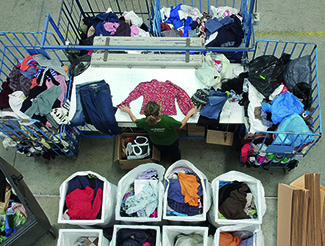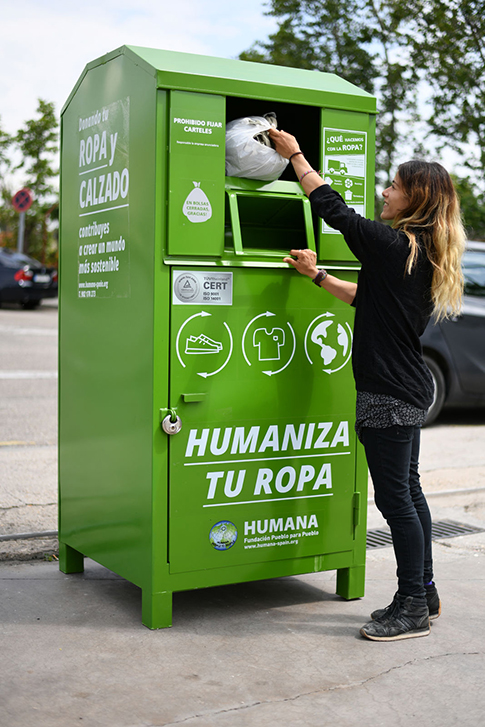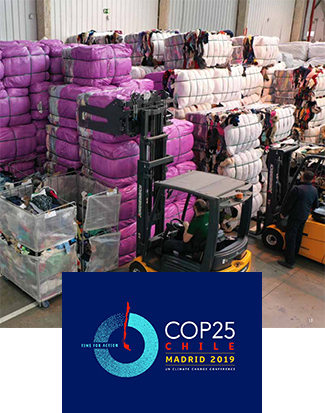consent_cookie
Duración: 1 year
Stores the user's cookie consent state
22-11-2019
The fashion industry is one of the most polluting on the planet: it is estimated that it is responsible for 8% of global greenhouse gas emissions. The causes are the high degree of consumption of resources and raw materials that it requires to meet the growing production of garments (translated into an equally expanding demand) and a high level of waste generation, pre and post consumption. It is estimated that 8% will skyrocket to 49% in a decade if the current production, distribution and consumption rate persists.
The "Textiles in Europe's circular economy" report prepared by the European Environment Agency analyzes the environmental and climate impact of the consumption of textile products in the European Union (EU). This document states that the production and consumption of clothing, footwear and home textiles that were sold in member countries in 2017 required approximately 1.3 tons of raw materials and 104 m3 of water per person; 85% of these materials and 92% of water were used in other regions of the world, mainly in Asia. "A large-scale shift towards the circular economy in the production and consumption of textiles is needed to reduce its greenhouse gas emissions, the use of resources and the pressure it exerts on nature," says the study.
The report also shows that textile production in Europe is equivalent to the emission of 654 kg of CO2 per inhabitant, so that it is the fifth source of CO2 emissions related to private consumption. Around 75% of these emissions took place outside the EU.
Reuse textile to reduce CO2 emissions
In the Northern Hemisphere, Humana helps reduce emissions through sustainable textile management and the reuse momentum, extending the life cycle of clothing, contributing to resource savings, environmental protection and fight against climate change.
The management of the textile used allows to reduce the number of waste that ends up in controlled deposits and in incinerator plants, therefore, decreases the emission of greenhouse gases. The European Commission estimates that every kilo of clothing that is reused and not incinerated or buried prevents the generation of 3,169 kg of CO2.
Since Humana recovered 17,427 tons in Spain in 2018, it is equivalent to saving 55,227 tons of CO2 into the atmosphere. Or put another way: it is equal to the annual emission of 20,743 cars (circulating 15,000 km per year) or the annual carbon dioxide absorption of 414,144 trees.
Boosting sustainable fashion
Not only do we avoid CO2 emissions with textile waste management, but reuse is the most effective vehicle for promoting sustainable fashion and prolonging the life cycle of garments. In 2018, more than 1.7 million people bought in one of the Humana stores of sustainable fashion in Spain, 16% more than the previous year.
Acquiring second-hand clothes avoids the annual consumption of millions of new clothes in our country, which translates into a significant saving of the natural resources that the fashion industry requires to meet the demand for fast fashion. This is reflected in a Humana Report based on a survey of 700 customers of the secondhand fashion stores in Madrid and Barcelona, which indicates that 6 out of 10 users say that, when buying a garment in the Foundation's establishments, they do not need to acquire it in another conventional point of sale.
This replacement index confirms the environmental value of the reuse. “The most sustainable garment is already manufactured. It is a perfect example of how to extend the life cycle of clothes and buy consciously, ”says the head of Marketing of the Secondhand Stores network in Humana, María Martínez. It is estimated that a fast fashion garment is worn an average of five times and we get rid of it just 35 days after buying it.
2.7 million new items left unused in 2018
Customers of Humana stores last year acquired 4.7 million garments. This implies that, at a minimum, the commitment to reuse prevented the consumption of 2.7 million new items in 2018, taking into account that replacement rate of 60%. It is a relevant saving for the environment considering that, for example, jeans type pants require 3,781 liters of water in the process of cotton production, manufacturing, transport and washing, and generates an emission of 33.4 kilos of CO2 . To this we must add that by washing our clothes we release microplastic fibers and other substances that pollute the oceans and drinking water. Around 20% of industrial water pollution comes from dyeing and textile treatment.
Three experts on climate change and sustainable agriculture from Humana People to People are already accredited to participate in the Blue Zone of the event.
The Blue Zone corresponds to the space administered by the United Nations in which the following activities will take place:


